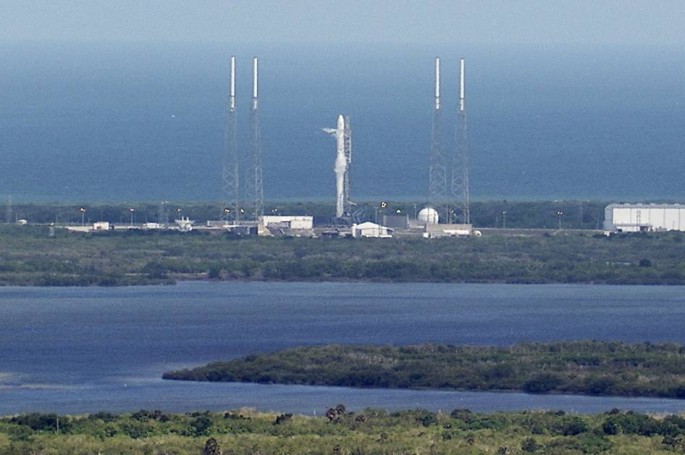SpaceX's unmanned rocket was scheduled to launch on Monday but was postponed due to poor weather at the Florida launch site. The rocket was carrying resupply cargo for the International Space Station.
The Falcon 9 booster rocket is carrying a Dragon cargo capsule bound for the ISS that was slated to blast off Monday afternoon from the Cape Canveral Air Force Station near NASA's Kennedy Space Center.
Weather resulted in thick clouds and nearby rain showers that cancelled the launch just three minutes before liftoff. The next launch is rescheduled for 4:10 P.M. EDT on Tuesday.
Apart from carrying out this cargo resupply mission under NASA, the goal of SpaceX is to innovate ways to reuse its booster rockets.
When the rocket dispatches its upper stage along with the Dragon capsule, the first stage booster rocket is designed to return back to Earth and refire its engines to steer its descent and deploy landing legs for touchdown on a floating drone barge some 200 miles off the coast of Jacksonville.
During a prelaunch press conference on Sunday, SpaceX Vice President Hans Koenigsmann estimated the success of the booster rocket landing at 75 to 80 percent.
The last landing attempt in January failed as the rocket ran out of hydraulic fuel for its steering fins as it crashed and exploded into the barge's platform.
Another attempt for February was also postponed due to high seas however the rocket successfully went through its preprogrammed landing sequence as it was seen hovering in a vertical position above the water before it splashed down and broke apart.
After this successful demonstration of an ocean landing, SpaceX is aiming to fly back its rockets back to their launch pad from the launch site so that these boosters can be refurbished and reflown in order to cut down expensive launch costs.
However, the primary space mission involves the Falcon 9 rocket and the Dragon capsule to deliver 4,300 pounds of food and scientific equipment including an especially made espresso machine for the crew in the US $100 billion space lab that flies from the surface of the planet at 260 miles above.



























